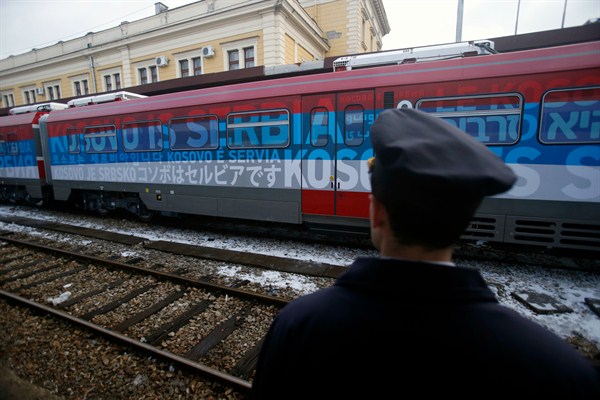Leaders from Serbia and Kosovo held a new round of talks in Brussels last week in a bid to defuse tensions that have been on the rise recently. The European Union’s foreign policy chief, Federica Mogherini, said she was “encouraged by the constructive engagement from both sides.” Leaders from Serbia and Kosovo declined to comment. In an email interview, Naim Rashiti, the executive director of the Balkans Policy Research Group, discusses the state of relations between Serbia and Kosovo.
WPR: What is behind the recent spike in tensions between Serbia and Kosovo?
Naim Rashiti: Last month a train traveled between Serbia and Kosovo for the first time in nearly two decades. However, Serbian authorities had it painted with “Kosovo is Serbia” in over 20 languages, sparking a major row with Kosovo. Leaders from Kosovo have been more careful with their language, but have stirred the pot by claiming to have information about northern Serbs being armed by Belgrade. Such provocations have led to an uptick in tensions and have caused average citizens on both sides to worry about a potential conflict.

